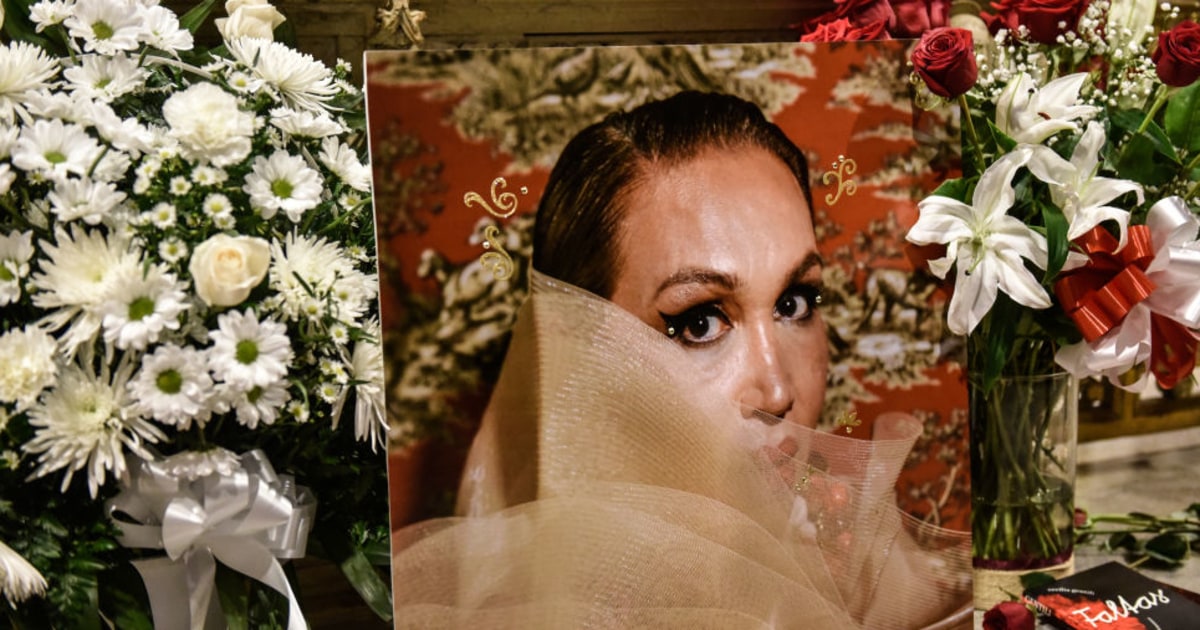The Spanish romantic writer Cecilia Böhl de Faber (Morgues, Switzerland, 1796-Seville, 1877) lived her literary passion as a constant game of mirrors, when not directly hiding her image, in addition to her identity.
He signed most of his work under the male pseudonym Fernán Caballero and protected his appearance so much that, according to what two professors from the University of Seville now certify, most of the portraits with which he has gone down in history ―paintings, engravings and drawings Most of them are fake.
First case: Museum of Romanticism in Madrid.
With the inventory number CE7058 appears “Painting.
Author: Valeriano Domínguez Bécquer (Seville, 1833–Madrid, 1870).
Title: Cecilia Böhl de Faber, Fernán Caballero”.
However, and despite this precise description, the painting actually reflects the image of Manuela Monnehay, who was a student of José Domínguez Bécquer - the painter's father - and godmother at the baptism of one of his sons, the poet Gustavo Adolfo Bécquer. .
'Portrait of Cecilia Böhl de Faber, Fernán Caballero', a painting by Valeriano Domínguez Bécquer exhibited at the Museum of Romanticism in Madrid.
It is actually the image of Manuela Monnehay.Museo del Romanticismo
Second case: Virtual Library of the Cervantes Institute.
Entry on Fernán Caballero: the image that appears to illustrate the biography of the romantic writer is “a work by the painter Eduardo Cano de la Peña (1823-1897), undated, deposited in the Museum of Fine Arts in Seville, entitled only
Portrait of a Lady,
and it is enough to compare it with the others confirmed by Cecilia to know that it is not her”, assures the researcher and professor at the University of Seville Mercedes Comellas, specialized in the work of Fernán Caballero.
And so on up to half a dozen false portraits and a more than confusing iconography of this crucial writer to understand Spanish literature of the 19th century.
The image that returns, therefore, a simple Google search with the names of Cecilia Böhl de Faber or her pseudonym is not only incorrect, but usually shows her as a woman in mourning, always in portraits of old age, with a Calvinist air, with a melancholy look, “which has nothing to do with the real Cecilia.
The graphic imagery of Fernán Caballero has abused the representations of her (false, above all) as an old woman, always associated with that reading of Fernán as the incarnation of the rancid and the reactionary”, explains the specialist.
The painting by Eduardo Cano de la Peña that appears in Fernán Caballero's entry on the Instituto Cervantes website does not actually represent the writer.
Comellas has reached these conclusions in the process of preparing the scientific catalog around the Andalusian writer commissioned by the Andalusian Center of Letters (CAL), which has chosen Cecilia Böhl de Faber as Author of the Year 2022 in Andalusia with the firm intention of "contemplating it from modernity and separating it from the topics and clichés that surround it", explains its director, Eva Díaz Pérez, in relation to the ultraconservative values associated until now with Fernán Caballero, such as his defense of traditional virtues ―including the feminine virtue―, the monarchy and uncompromising Catholic morality.
And that is where Comellas considers that the origin of the confusion lies.
“In other previous works, such as the edition of the
Selected Works
(Fundación José Manuel Lara, 2010), I already set out to show that that lady who was said to be so stale had been a great literary experimenter;
but that time I did not study iconography”, continues the specialist.
However, on this occasion, a scientific catalog of a 19th-century writer had to dedicate a very important part to the author's illustration, for which Mercedes Comellas contacted the professor of Art History at the University of Seville, Magdalena Illán, An expert in 19th-century painting, whose research led her to a fundamental finding: a painting of Cecilia's youth in a private Andalusian collection – when she was not yet Fernán Caballero – which was the starting point for dismantling all the agreed iconography to date.
“It is known with certainty that it is true, it is part of a trilogy,
Finding of Professor Magdalena Illán in a private collection, which is considered the only true portrait of Fernán Caballero's youth and which dismantles all the iconographic attribution made to date.
Because of the clothing, Illán assures, it can be dated between 1826 and 1828, and represents a young woman "with lighter hair and eyes, thoughtful but not melancholy, and flirtatious, dressed in the latest fashion."
But what is more important for the specialists: she is portrayed in her professional facet, with a pen in one hand and the other leaning on the desk.
“It is very unusual at that time to find portraits of women writers”, values the art historian, to which Comellas adds another certainty of what for her was a suspicion: that she was already writing in those early years, although she did not publish.
When she began to do so, in the year 1849, she published four novels that year and two the following year, "no one writes six novels in a year and a half," says the professor.
Two weeks ago, the teachers put another pike in the investigation with the crucial discovery of another true painting that was known, but that was unlocated: the portrait that Federico Madrazo painted of him in Seville commissioned by the Duke of Montpensier.
“Fernán has often been confused with the portrait that Madrazo made of another 19th-century writer, Carolina Coronado, and which also abounds on the internet.
But the attribution of him is totally false, ”explains Illán.
The true portrait, which also belongs to a private collection that prefers to remain anonymous, its existence was known because there is a copy that is kept at the University of Seville, also commissioned by the Duke of Montpensier to be included in the Gallery of Illustrious Characters of the academic institution.
"She never liked that painting and it was hardly spread, it seemed to her that it aged her a lot," says Comellas.
There are several letters in which he talks about the painting.
For example, one to his friend Cañete, dated September 2, 1859, responding to the request he had made to send her a photograph of the canvas.
There he writes: "I wish I hadn't consented to Madrazo wasting his magnificent brush in copying this bad model!"
True portrait of Cecilia Böhl de Faber made by Madrazo (copy from the University of Seville).
In this way, as the second great argument of this gibberish about the author's image, Cecilia's own will to hide her image and, ultimately, her identity flies over.
“Fernán Caballero does not want to be portrayed since she chooses her male pseudonym for obvious reasons.
She wanted to present herself as a man because she wanted to make literature reserved exclusively for men”, explains Comellas.
“She herself says that she does not write novels, that she does essays, that is why she has to give herself a masculine name, because a woman then could write sentimental, love novels, but not make serious literature, the kind that serves to explain society” .
In this defense of Fernán Caballero as an experimental author ―“despite having a conservative ideology”, acknowledges Comellas―, the researcher appreciates that the Andalusian author was the first, before Galdós, to write the novel of the Spanish middle class, concerned for explaining social problems and that is even inspired by the press as literary material, until then something unusual.
Personally, Cecilia Böhl (“there is not a single firm where De Faber writes”, the professor appreciates as another of the great misunderstandings about the writer) was married three times, one of them with a man 20 years younger than even She belonged to her social class, and could even be considered “the first lady who insists on living off the money from her literary production, from the articles she manages to sell to one magazine or another,
and he makes guesses to reach the end of the month.
That is not only something absolutely new, but it doesn't seem like a lot to me”, insists Comellas, who defines it very well: “Now we know that her literature was as chic as herself”.
The scientific catalog will be released next June along with an extensive program of activities scheduled by CAL to honor the Andalusian writer.
In the opinion of its director, this investigation “is going to force us to review the authorship of the paintings in the Museum of Romanticism and other institutions with paintings, drawings and engravings where Fernán Caballero is represented.
It was absolutely revealing."
Portrait of Carolina Coronado painted by Federico Madrazo, exhibited in the Prado Museum.
Exclusive content for subscribers
read without limits
subscribe
I'm already a subscriber















